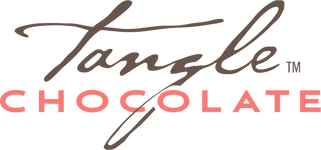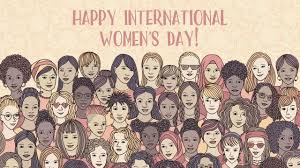Women in Chocolate
Mar 16, 2023
It’s Women’s History Month, the perfect time to talk about the history of women in chocolate! Let’s look at women’s roles in both the growing and making of chocolate, and in consuming chocolate.
Women or non-binary individuals have been involved in cultivating cacao trees, harvesting the pods, and making chocolate right from the beginning—which was thousands of years ago in parts of present-day Guatemala and Mexico. (We know the dates and locations from archeologists’ discovering traces of cacao on the inside of ancient pottery shards.)
IN THE EARLY DAYS...
Chocolate was mixed with water and frothed using a specific pouring technique and a tool called a molinillo, which is still sold today in specialty shops and online. The bitter drink was served by women to men of high status.
Chocolate was also cooked with cornmeal and served as a breakfast porridge to male laborers because it was extremely filling and supported long hours of work.

It was not customary for women to consume chocolate. One reason cited is that women’s status was not equal to the specialness of the product. Another reason cited is that chocolate was thought to be an aphrodisiac, and would be therefore dangerous for women to access. (Feminists everywhere, have at that one!)
Europeans first learned about cacao (and drinking chocolate) when Christopher Columbus intercepted an indigenous boat in 1502 during one of his exploratory voyages. In Europe, drinking chocolate was first enjoyed by elite men, and the tradition continued in the US when two women named Dorothy Jones and Jane Barnard opened the first chocolate and coffee houses in Boston in 1670. Although art that we have depicting chocolate houses does not include women as customers, there is some evidence that gradually women were allowed to be among the lucky consumers of this luxury product. In fact, one source claims that the saucer, first seen in 1645, was intended not for cooling tea, but rather to catch any chocolate spills that might otherwise end up staining ladies’ elaborate 17th and 18th century dresses.

FROM THE INDUSTRIAL REVOLUTION TO TOLL HOUSE COOKIES
During the Industrial Revolution (1760- 1840), machinery was invented to make chocolate making easier. So, over time, instead of hoarding it for the elite customer, it was marketed to all socioeconomic classes—but still, men controlled the purse and were the majority of chocolate consumers. But it was women who were most often tasked with making the final chocolate treats that men consumed, whether it was via Fannie Farmer’s cookbooks, first published in 1896, or Ruth Wakefield’s toll house chocolate chip cookies, the recipe of which was developed in 1938 (and later sold to Nestle in exchange for a lifetime supply of free chocolate).
It wasn’t until the mid-twentieth century that chocolate companies truly targeted women as a consumer group. Check out this advertising brief from Rowntree Chocolate’s ad firm in 1951 (with thanks to chocolate writer and educator Megan Giller for digging up this brief):
“We are selling to mothers and wives chiefly (because more cocoa is drunk in families with children than in families without, because the woman is the family’s purchasing agent, and because she can be inspired to act in her husband’s and children’s interest when she might not do so in her own). … Any technique by which we can appeal to the mother’s concern for the well-being of her family or her related anxiety about being a successful mother and winning the loyalty and gratitude of her husband and children might serve as a vehicle to make her think of Rowntree’s Cocoa in the way we want her to think of it.”
And little needs to be said about how chocolate is currently marketed to women in numerous ways: as a luxury product, as a comfort food, as an aphrodisiac to be enjoyed alone or with a romantic partner—and of course chocolate is also heavily marketed to men to give to the women in their lives. Women are now the majority consumers of chocolate.

WOMEN EVERYWHERE!
Women have become more involved not only in chocolate consumption, but also in every aspect of chocolate production over the past decades. Victoria Kichuk, owner and veteran chocolate educator at Cocoa Beantown in Boston, has this to say. "It feels like a full circle moment to see so many chocolate makers, chocolatiers, farmers, educators and more roles being occupied by women, after so much of our chocolate history across the world being centered on them. Whether it was indigenous healers or the focus of chocolate advertisements being targeted at women in times past, today women are asserting themselves in chocolate businesses at various levels.”
At Tangle, we import most of our cacao beans from Uncommon Cacao, started by rock star Emily Stone, who proudly drives a 4x4 over the potholed backroads of Central America, partly to inspire the women she passes who may never have seen another woman behind the wheel. Some of those beans we buy are farmed by women, who have a full vote on their co-op board. There are many additional women in the fields and forests doing the work but not getting recognition or voting power; still, the situation for women farmers is improving. Our trade association, the Fine Chocolate Industry Association, was started by a woman, Mary Jo Stojak, and is currently directed by another woman, Ephi Maglaris. A US-based cacao research and educational non-profit, the Fine Cacao and Chocolate Institute, was started by Carla Martin. Other women are prominent chocolate sommeliers, writers, historians, scientists, equipment manufacturers, chocolate makers and chocolatiers. Right here in New England, there are other only-women-owned chocolate companies besides Tangle, including EH Chocolatier in Somerville, MA, Enna Chocolate in Exeter, NH, and Bixby Chocolate in Rockland, Maine.
Victoria Kichuk again: “There are more women in the industry contributing to the future direction of where we have left to go and the work we have yet to do to expand inclusion efforts and continue to diversify the number of voices and perspectives at the table.”

Yet, there are some extra challenges that women face in the chocolate industry, as Ephi Maglaris points out. “Women have an advantage as chocolate makers and business owners both because we are used to juggling multiple things, and because it has been proven that women have more tastebuds, plus more are ‘supertasters’ than men. Unfortunately, women also have less access to the capital needed to start and grow a business. ” I would add another challenge for some of us women (though this could also be true for people of any gender), which is that working with heavy bags of cacao and other ingredients and operating heavy machinery is hard!
The bottom line, as Maglaris says, is the bottom line. “No matter how delicious the chocolate is and how committed the owners are to environmental and social issues, unless the company is profitable as a business, it can’t stick around.”
But Maglaris, Kichuk and I agree that with the number of women involved in this industry increasing every day, and the number of people in the world loving chocolate as much as we do, the future looks pretty, well, sweet.
Select sources:
http://kvadratinterwoven.com/
https://www.sensoryvalue.com/
https://www.chocolatenoise.
https://www.history.com/
https://www.smithsonianmag.


